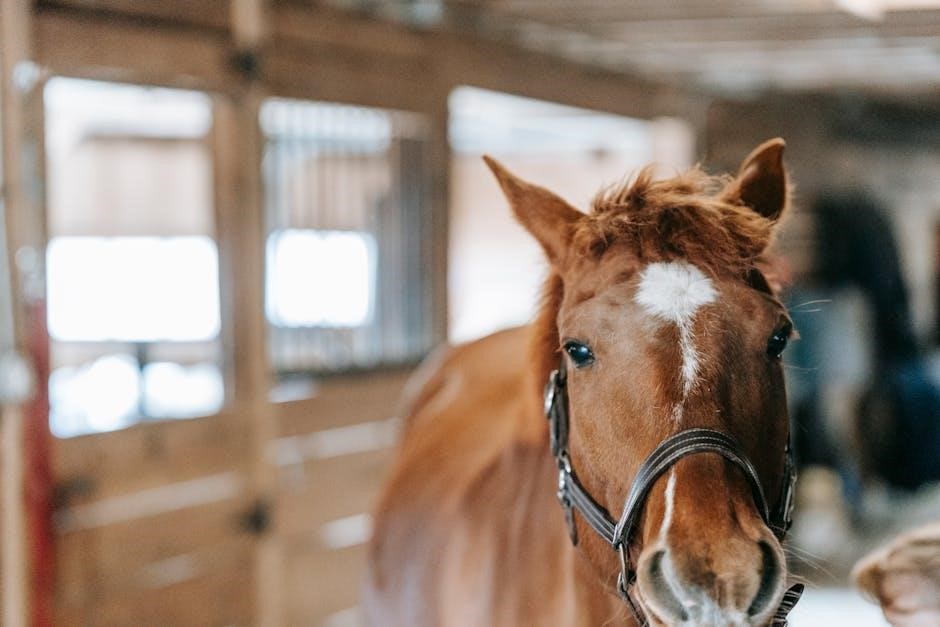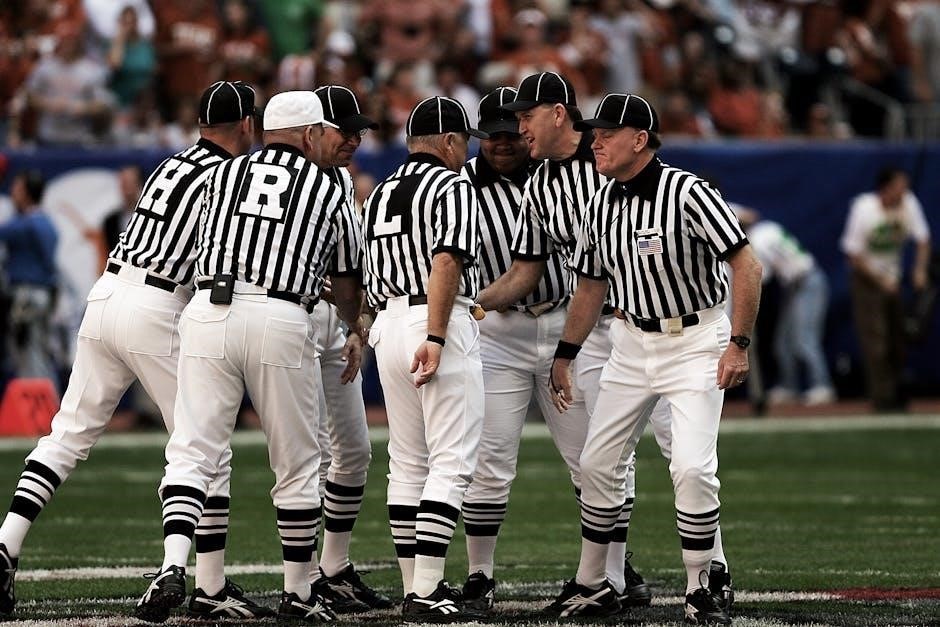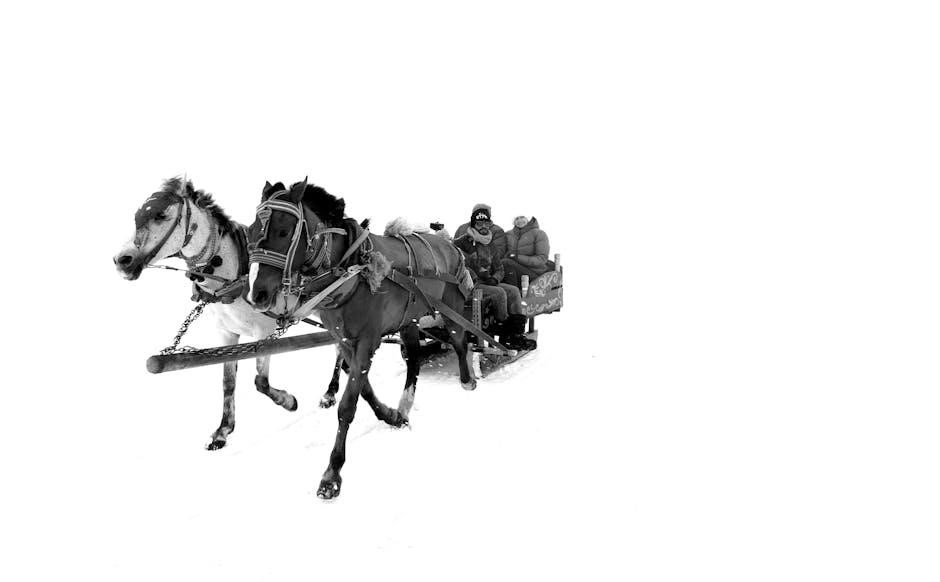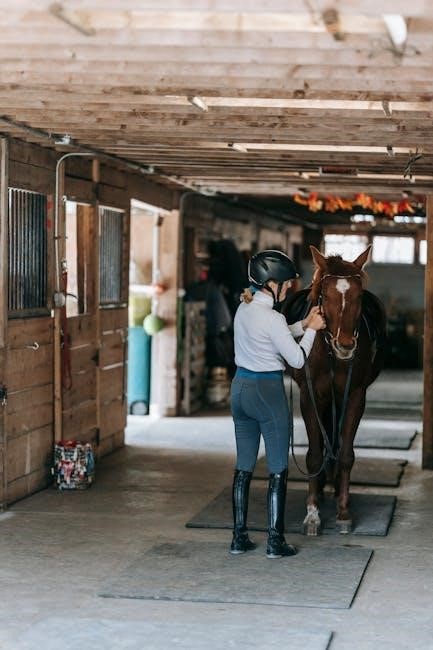horseshoe rules pdf
Horseshoe pitching is a precision sport requiring skill and strategy, popular in the U.S. and Canada. Governed by the NHPA, it involves tossing horseshoes at stakes.
The official rules ensure fair play, covering court dimensions, equipment specs, and scoring methods. Annual updates maintain the sport’s integrity and competitiveness for players of all levels.
1.1. Brief History of the Game
Horseshoe pitching originated in early American history, evolving from informal games to organized competitions. The National Horseshoe Pitchers Association (NHPA) was formed in 1914, standardizing rules and promoting the sport. The first official rulebook was published in 1921, establishing guidelines for court layouts, equipment, and scoring. This formalization transformed horseshoe pitching from a regional pastime into a structured national sport, ensuring consistency and fair play across competitions. The NHPA continues to update rules annually, maintaining the game’s integrity and appeal for players of all levels.
1.2. Importance of Official Rules
Official rules in horseshoe pitching ensure fairness, consistency, and safety across all competitions. They provide clear guidelines for court setup, equipment specifications, and scoring methods, minimizing disputes. Adhering to these rules allows players to compete on a level playing field, fostering sportsmanship and skill development. The National Horseshoe Pitchers Association (NHPA) updates the rulebook annually to address evolving needs and maintain the sport’s integrity. By following official rules, participants can fully enjoy the game while upholding its traditions and competitive spirit.

Court Layout and Dimensions
A horseshoe court is a level rectangular area, 6 feet wide and at least 46 feet long, with stakes placed 40 feet apart at each end.
2.1. Official Court Measurements
The official horseshoe court measures 6 feet wide and a minimum of 46 feet long. Stakes are positioned 40 feet apart, centered within 6-foot-square areas at each end. Courts must be level and free of obstructions to ensure fair play. The pitching box, from which players toss, is 6 feet long and 16 inches wide, located behind each stake. These dimensions are strictly enforced by the NHPA to maintain consistency across all competitions and casual games.
2.2. Stake Placement and Alignment
Stakes are placed 40 feet apart, centered within 6-foot-square areas at each end of the court. They must be 14 to 15 inches above the ground and slightly angled toward each other. Proper alignment ensures fairness and accurate scoring. The area around the stakes must be clear of obstructions to allow for precise tosses. These specifications, outlined by the NHPA, are crucial for maintaining consistent and fair play in both casual and competitive settings.

Equipment Requirements
Horseshoes must weigh no more than 2 lbs, 10 oz, with a width of 7 1/4 inches and length of 7 5/8 inches. Stakes are 14-15 inches tall.
3;1. Horseshoe Specifications
Horseshoes must meet strict measurements: maximum weight of 2 lbs, 10 oz, width of 7 1/4 inches, and length of 7 5/8 inches. The opening must not exceed 3 1/2 inches.
They are typically made of metal and designed for tossing. Horseshoes must be approved by the NHPA to ensure compliance with official standards. Any altered or modified shoes are prohibited.
Players are allowed to use their own horseshoes if they meet official weight and size requirements. Proper equipment ensures fair competition and adherence to the rules of the game.
3.2. Stake and Pitching Box Details
The stakes are 14-15 inches tall, placed 40 feet apart for men and 30 feet for women. They must be centered within 6×6-foot squares at each end of the court.
The pitching box is a 6-foot-wide area behind each stake. Players must pitch from within this box, ensuring both feet stay inside until the shoe is released.
Stakes are inclined slightly toward each other for safety and better play. The setup ensures a level and consistent playing field for all participants.

Scoring Methods
Horseshoe pitching uses two scoring systems: cancellation and count-all. Points are awarded based on shoe proximity to the stake, with specific rules for each method.
4.1. Cancellation Scoring
In cancellation scoring, points are awarded based on the proximity of horseshoes to the stake. A horseshoe within one horseshoe-width of the stake scores points, while those outside do not. If both players have shoes within scoring range, the higher-scoring shoe cancels out the lower one. This method emphasizes precision and strategy, as players aim to outperform their opponents with each toss. Proper measurement and fair play are essential to maintain the integrity of the game.
4.2. Count-All Scoring
Count-all scoring is a method where all horseshoes thrown by a player are counted in the score, regardless of their opponent’s throws. Each ringer (a horseshoe that completely encircles the stake) is worth three points. Shoes within one horseshoe-width of the stake score points based on their proximity. The player with the highest total points at the end of the game wins. This system rewards consistency and accuracy, as every throw contributes to the final score. Proper measurement ensures fairness in determining point values for each shoe.
Game Rules and Procedures
Official rules ensure fair play, limit practice shoes, and require players to stay on the court. Regulation games are set at 50 points for tournaments and 21 for leagues.
5.1. Pitching Techniques and Etiquette
Horseshoe pitching requires precision and proper technique. Players must stand behind the pitching box and release the shoe before crossing the foul line. Etiquette demands staying quiet during opponent’s pitches and refraining from distractions. Shoes must be pitched in the same direction, and contestants should remain on the court during play. Practice shoes are limited to four between games, ensuring fair and respectful competition. Proper handling of horseshoes and adherence to these rules maintain the game’s integrity and sportsmanship.
5.2. Practice Shoes and Time Limits
Players are allowed four practice shoes between games once the scorekeeper and both pitchers are ready. A contestant absent within three minutes of the game’s start forfeits. Spare shoes must be approved and meet official specifications. Time limits ensure efficient play, maintaining the game’s flow. Adhering to these rules promotes fairness and respect among participants, ensuring smooth progression of the match. Proper handling of practice shoes and punctuality are essential for maintaining the integrity of the game.
5.3. Regulation Game Length
A regulation game consists of 50 points in tournaments and matches, while league games are played to 21 points. The game concludes when a player or team reaches the required score. Time limits and practice shoes ensure efficient play, maintaining the game’s flow. Proper handling of practice shoes and punctuality are essential for maintaining the integrity of the game. Adhering to these rules promotes fairness and respect among participants, ensuring smooth progression of the match.

Penalties and Violations
Penalties include fouls, illegal pitches, and rule violations. Consequences range from score deductions to disqualification; Proper conduct ensures fair play and sportsmanship throughout the game.
6.1. Fouls and Illegal Pitches
A foul occurs when a pitcher violates throwing rules, such as stepping outside the pitching box or releasing the horseshoe improperly. Illegal pitches, including altered or oversized horseshoes, are penalized. Fouls result in score cancellation for that pitch, while illegal equipment disqualifies the player. Proper footwear and adherence to safety guidelines are essential to avoid violations and ensure fair competition. Compliance with NHPA standards guarantees a level playing field for all participants.
6.2. Consequences of Rule Violations
Violations of horseshoe pitching rules result in penalties, including disqualification or forfeiture of the game. Illegal pitches or equipment lead to score cancellation or loss of turn. Contestants failing to appear within three minutes of game start forfeit automatically. Repeated violations may result in disqualification from the tournament. Proper adherence to rules ensures fair play and maintains the integrity of the game, as outlined by the NHPA guidelines.
Special Rules and Exceptions
The NHPA provides rules for junior and senior divisions, with age-specific requirements. Mixed doubles and team play formats are also outlined, ensuring inclusivity for all participants. Proper documentation is required for eligibility in special categories to maintain fair competition.
7.1. Junior and Senior Divisions
The NHPA establishes specific divisions for juniors and seniors to ensure fair competition. Juniors are divided into age groups, with Cadets being nine or younger, while seniors have categories based on age thresholds. These divisions allow players of similar experience and skill levels to compete, fostering a balanced and enjoyable environment. Rules regarding equipment and pitching distances are adapted for younger participants, ensuring safety and accessibility. Proper documentation and age verification are required for eligibility in these special categories;
7.2. Mixed Doubles and Team Play
Mixed doubles and team play formats add variety and camaraderie to horseshoe pitching. Teams typically consist of two players, with mixed doubles requiring one male and one female participant. Pitching alternates between teammates, and scoring follows standard methods. Team strategies often emphasize communication and coordination to maximize points. Official rules ensure balanced competition, maintaining the sport’s inclusive nature. These formats are popular in leagues and tournaments, fostering a sense of unity and shared achievement among players.
Tournament Guidelines
Tournament guidelines ensure organized competition, outlining eligibility, scheduling, and conduct. Players must meet membership requirements, adhere to timelines, and maintain proper etiquette to ensure fair play and sportsmanship.
8.1. Eligibility and Membership Requirements
Eligibility for tournaments requires players to be members of the NHPA in good standing. Age divisions include juniors (under 20), seniors (over 60), and adults (20-60). Contestants must represent their state or province and adhere to equipment standards. Membership ensures adherence to official rules and fair competition. Players must meet age criteria on January 1st of the tournament year. Proper documentation and dues are mandatory for participation. This ensures a level playing field and maintains the integrity of the sport.
8.2. Scheduling and Forfeits
Tournaments operate on strict schedules to ensure timely progression. Players must be present at the start of their scheduled game, or they may forfeit. A three-minute grace period is allowed, after which the match is forfeited unless approved by officials. Practice shoes are limited to four per player once the court is ready. Scheduling conflicts must be resolved by tournament officials to maintain fair play. Proper time management ensures smooth competition flow, adhering to the sport’s organizational standards and respecting all participants’ time.
Horseshoe pitching is a traditional sport governed by the NHPA, emphasizing fair play and skill. Adhering to official rules ensures enjoyable competition for players of all levels.
9.1. Importance of Adhering to Rules
Adhering to official horseshoe pitching rules ensures fair play, maintaining the sport’s integrity and consistency. These guidelines, set by the NHPA, provide clear standards for court setup, equipment, and scoring. By following rules, players ensure equitable competition and respect for the game’s traditions. Annual updates keep the sport dynamic, addressing any issues and adapting to player needs. Compliance fosters sportsmanship, allowing participants to focus on skill development and enjoyment. Staying informed about rule changes is essential for players to remain competitive and respectful of the game’s established protocols. Proper adherence guarantees a positive experience for all involved.
9.2. Resources for Further Reading
The National Horseshoe Pitchers Association (NHPA) provides comprehensive resources, including the official rulebook, available as a PDF on their website. This document details court dimensions, equipment specifications, and scoring methods. Additional guides, such as the Franklin Sports horseshoe set instructions, offer practical setup advice. Players can also find tutorials and rule summaries on official horseshoe pitching websites. These resources ensure players stay informed about rule changes and best practices, enhancing their understanding and enjoyment of the game. Regular updates keep the sport evolving while maintaining its core traditions.
